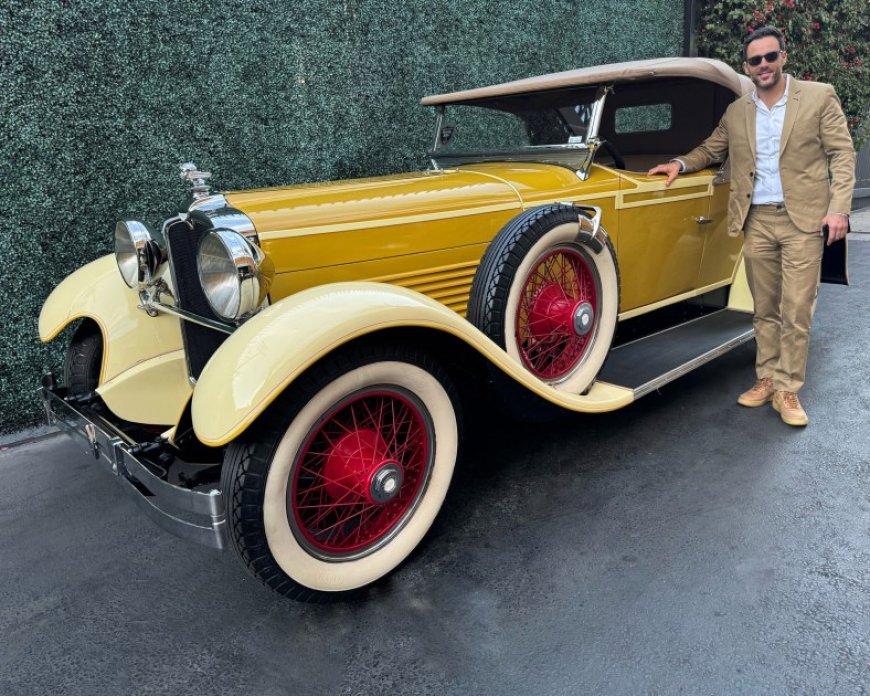Car Tales: The 1928 Stutz BB Cabriolet Is Classic Car Royalty
When The Great Gatsby author F. Scott Fitzgerald would be sighted during the roaring Twenties driving into Manhattan from the Hamptons with his glamorous wife Zelda, what would he be driving? Why, it would be in the chic’est car of its age, a Stutz. In the same city whenever celebrated society columnist Walter Winchell would be parked… The post Car Tales: The 1928 Stutz BB Cabriolet Is Classic Car Royalty appeared first on The Online Automotive Marketplace.

When The Great Gatsby author F. Scott Fitzgerald would be sighted during the roaring Twenties driving into Manhattan from the Hamptons with his glamorous wife Zelda, what would he be driving? Why, it would be in the chic’est car of its age, a Stutz.
In the same city whenever celebrated society columnist Walter Winchell would be parked up outside the Plaza Hotel, what would he be in? Again, a Stutz.
And when heartthrob actor Gary Cooper could be seen cruising around Hollywood, it was in the same brand of car. A Stutz!
Stutz! Sounds like a brand of beer, doesn’t it?

But Stutz’s automobiles were what made Indianapolis famous, thanks to a humble workingman called Harry C Stutz. In 1898 Stutz, a twenty-two-year-old bicycle repairman, built his first automobile, a gas buggy driven by a two-horsepower engine. One year later Stutz Manufacturing was founded to produce gasoline engines.
In 1911 Harry Stutz drove the first car manufactured under the name of Stutz – and only completed and fit to drive the previous day – in the first ever Indianapolis 500 Race. Apart from having to change tires numerous times the car ran flawlessly for the entire five hundred miles. Harry Stutz finished in 11th place, averaging 68 mph over the course. Hence the slogan adopted by the Stutz car company: “The Car That Made Good in a Day”.
The next year Stutz cars were placed 1st and 2nd in the 203-mile Illinois Trophy Race at Elgin.
And a year later, in 1913, after the Stutz Motor Car Company had been formed, Gil Anderson drove a factory Stutz for a 1st place finish at the Elgin National Trophy Race. That year Stutz entered ten other races and took home eight 1st place finishes. Harry C. Stutz’s Stutz Motor Car Company had quickly established itself as a trailblazer in the automotive industry.
With a vision to create powerful and luxurious automobiles, Stutz had revolutionized the industry with its innovative engineering and exceptional craftsmanship.

We presently have at Beverly Hills Car Club a wonderful example of motoring history, a 1928 Stutz BB Cabriolet that is finished in a mustard yellow exterior with ivory fenders complemented with a beige interior. To further enhance the exterior, this American classic has a rumble seat that gives an option for an open-air experience for additional passengers.
To revive the marque a further set of new owners, headed by Bethlehem Steel’s Charles M Schwab, took over the company in 1922. They, in turn, brought in Frederick Ewan Moskovics, an experienced automotive executive and engineer, poached from Daimler. Moskovics sparked a radical Stutz redesign in 1926 by featuring a powerful eight-cylinder engine with an overhead camshaft, mounted in a low-slung chassis that could accommodate stylish bodies. And he refocused the brand toward creating safety cars – which had become a common theme of the period.
The era that we associate these marvelous Stutz cars with is inarguably the 1920s: they always look as though they should have a flapper girl riding in them. But unfortunately, like that decade, Stutz suffered with the Wall Street Crash that began on October 24, 1929, which caused a rapid erosion of confidence in the U.S. banking system.

Stutz cars were expensive, and once The Great Depression took hold there was no place for a high-priced, hand-made, low production automobile. In 1934, with only a total of 35,000 cars produced in the company’s 25-year history, the last Stutz rolled off the assembly line. And the business closed its doors.
But there was a final act. In 1968 the Stutz brand was revived as Stutz Motor Car of America. Its focus was on producing neoclassic automobiles, which it did until 1995. This reincarnation of the company had considerable success. Frank Sinatra, Dean Martin, Barry White and Sammy Davis Jr. all owned Stutz cars.
And in the very last picture taken of Elvis Presley whilst he was alive, what was he driving? Yes, you’ve guessed it: a Stutz. Clearly the Stutz is the King of Classic Cars.
Whether you are selling a showroom-quality car, or a total restoration project, the Beverly Hills Car Club is always looking to add to their wide-ranging inventory. For cars that are barn-find restoration projects, all the way up to top-of-the-line concours cars; you are sure to find your dream car!

-Alex Manos, Owner – Beverly Hills Car Club
Looking to Sell Your Classic Car? Let’s Talk!
The post Car Tales: The 1928 Stutz BB Cabriolet Is Classic Car Royalty appeared first on The Online Automotive Marketplace.











































